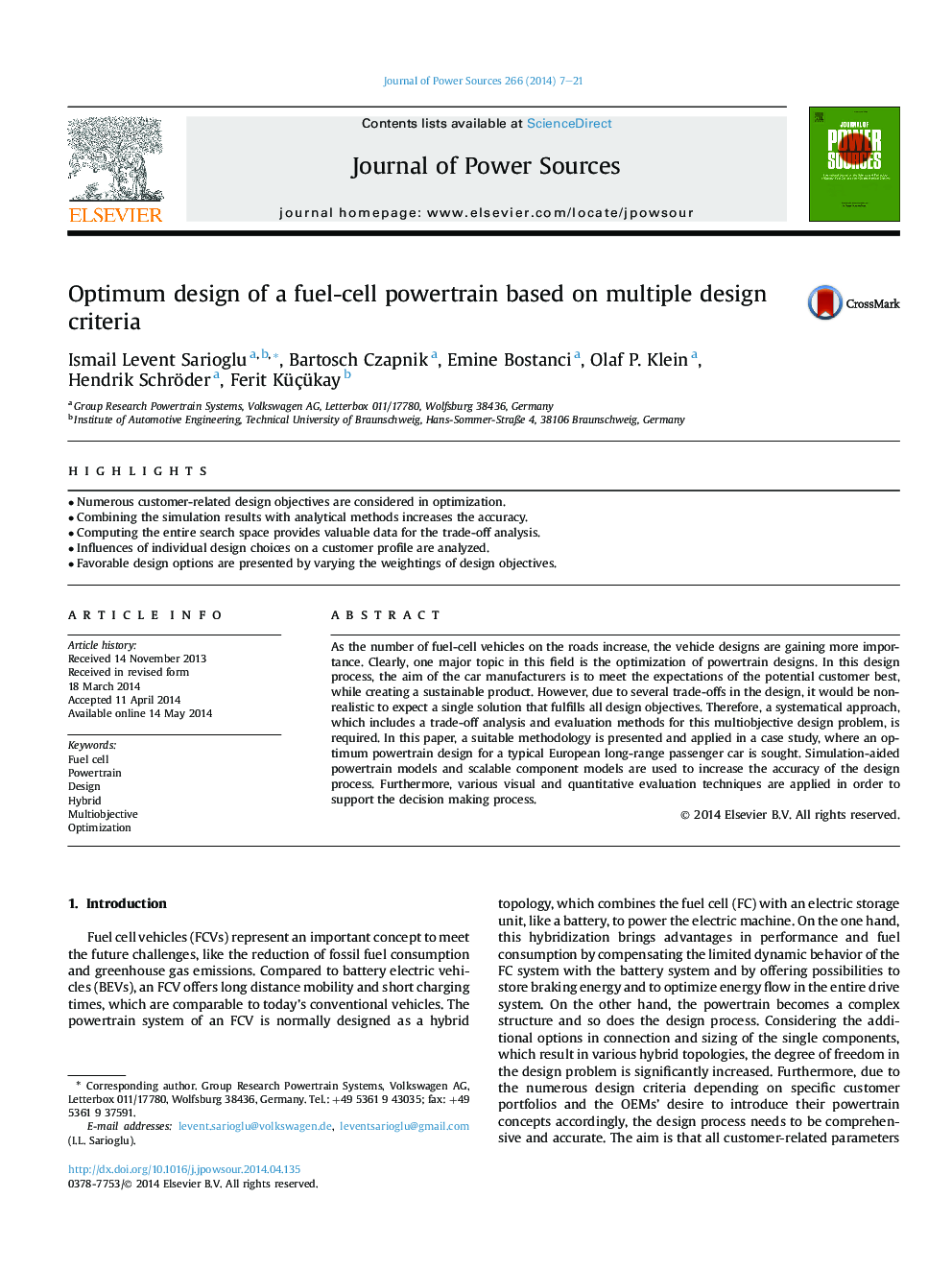| Article ID | Journal | Published Year | Pages | File Type |
|---|---|---|---|---|
| 1286738 | Journal of Power Sources | 2014 | 15 Pages |
•Numerous customer-related design objectives are considered in optimization.•Combining the simulation results with analytical methods increases the accuracy.•Computing the entire search space provides valuable data for the trade-off analysis.•Influences of individual design choices on a customer profile are analyzed.•Favorable design options are presented by varying the weightings of design objectives.
As the number of fuel-cell vehicles on the roads increase, the vehicle designs are gaining more importance. Clearly, one major topic in this field is the optimization of powertrain designs. In this design process, the aim of the car manufacturers is to meet the expectations of the potential customer best, while creating a sustainable product. However, due to several trade-offs in the design, it would be non-realistic to expect a single solution that fulfills all design objectives. Therefore, a systematical approach, which includes a trade-off analysis and evaluation methods for this multiobjective design problem, is required. In this paper, a suitable methodology is presented and applied in a case study, where an optimum powertrain design for a typical European long-range passenger car is sought. Simulation-aided powertrain models and scalable component models are used to increase the accuracy of the design process. Furthermore, various visual and quantitative evaluation techniques are applied in order to support the decision making process.
